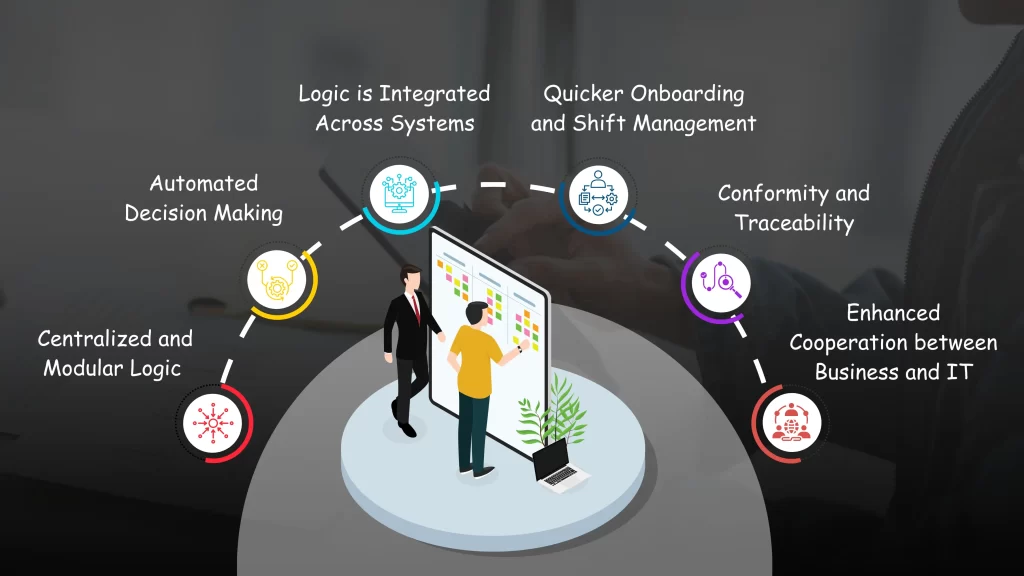
As the data collection methods have extreme influence over the validity of the research outcomes, it is considered as the crucial aspect of the studies
May 2025 | Source: News-Medical

As we navigate the digital transformation, we are pressed for speed, consistency, and agility by the demands of however we are working. Traditional information workflows — typically manual, siloed, or hard-coded — cannot keep up with the speed of change. Logic-based solutions provide a streamlined, scalable, and intelligent method of managing workflows across departments, platforms, and decision points.
Regardless of whether your organization is in health care, finance, education, or logistics, logic-driven development can significantly improve your operational efficiency and accuracy. The following article describes how logic-based systems work, their underlying benefits, and how organizations represent them for maximum value.[1]
Business rules and logic play a critical role in the efficient and consistent operation of an organization. They define how decisions are made, set expectations, ensure compliance with policies and regulations, and support the automation of key business processes [2]
Logic-based systems essentially separate “what the company needs to do” (the logic) with “what the system can do” (the technology). This separation allows companies more flexibility and control.
In the context of a business process, activities are structured in a defined sequence (control flow) and connected by the transfer of data (data flow). These processes are designed to achieve specific objectives. Business rules operate within this framework by adding decision points—conditions that guide or restrict how the process behaves. Typically expressed as constraints or in an “if condition, then action” format, business rules help formalize domain knowledge. They must be clearly defined in relation to process steps to ensure they are actionable and maintainable. For example:
If customer credit score > 700 and income > $50,000, then approve loan.
To implement and manage these rules effectively, organizations increasingly rely on logic-based solutions. These systems use tools like rule engines, decision models, and workflow automation platforms to execute business logic separately from core application code.
This separation of business logic (what needs to happen) from system logic (how it happens technically) enhances agility. It allows rules to be updated or expanded without modifying the underlying system architecture. Technologies enabling this approach include:
Conventional development approaches typically put rules and workflows directly into application code. And over time, this has led to the following:
Furthermore, many companies still rely on manual workflows, spreadsheets, and disparate systems and tools. This results in human error, slow response time, and no traceability in the case of compliance audits.

When all business rules are defined within one reference source, organizations will have visibility with respect to how decisions are made. Does a customer qualify for a specific discount? Did the applicant’s documents get approved? Is the applicant in compliance? Each rule is contained and is sortable, testable and reusable. The modularity of logic-based systems:
Allows for running the organizations more in line with the Agile method through experimentation and quick delivery
If you’re starting a new process, launching a product, or just entering a new region, systems based on logic allow you to easily copy and change all the workflows instead of rebuilding them. They can also change logic modules without undergoing any total reconfigurations of their systems, thereby reducing the time from idea to market, and time spent on training.
In practical terms, workflow business rules play a key role in ensuring consistency and control across business processes. For example, during the employee onboarding process, a workflow rule might require that all new hire documents be verified by the HR department before granting access to internal systems. Similarly, in an order fulfillment system, any order exceeding a certain value may be flagged for manual review.
These workflow business rules are essential for establishing a smooth, predictable process where tasks are performed in a standardized manner. By reducing the need for manual decision-making, such rules help minimize delays and errors, while also embedding compliance with organizational and regulatory policies directly into the process.
Key Benefits of Workflow Business Rules:
Logic-based solutions are a cleaner, smarter, and more flexible way to handle complex workflows for today’s businesses. Organizations can increase the capacity of their workflows, decrease human error, and respond in real-time to the changing demands of Logic-based solutions Streamline operations, reduce errors, and scale faster with logic-driven automation.
Start small. Scale smart. Let your workflows do the thinking.
Contact us today to explore the right tools and strategies for your organization.
[Get a Free Workflow Assessment] Or speak to an expert: [Book a Consultation]
WhatsApp us